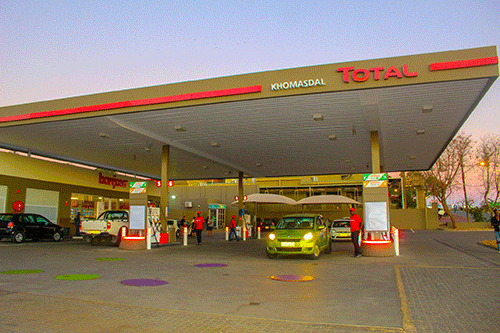The new year came with a blessing, as fuel prices were reduced for January, a month that traditionally comes with huge financial burdens after the holidays.
Motorists have seen persistent increases in local fuel prices in the past few years.
Namibia announced the largest fuel increase ever in its history in April 2022, with petrol increasing by N$1.95 per litre, whilst diesel increased by N$2.95 per litre.
Today, Namibian consumers will experience a major reduction in fuel prices when petrol prices will decrease by 180 cents per litre and diesel will also decrease by 220 cents per litre.
The new fuel prices in Walvis Bay will, thus, become N$20.65/litre for diesel and N$18.28/litre for petrol.
Making the latest decrease known, energy ministry spokesperson Andreas Simon said: “The ministry recorded high over-recoveries on both petrol and diesel, namely an over recovery of 183 cents per litre on petrol and an over recovery of 220 cents per litre on diesel”.
In a statement, he added the exchange rate figures for the period of 1 to 26 December 2022 indicated the Namibian Dollar has slightly recorded another appreciation against the US$ at N$17.3187 per US$, compared to N$17.4533 per US$ at the end of November 2022.
This, according to him, has a net positive effect on the fuel prices paid by consumers at the pumps.
As per calculations by the ministry, Simon stated the average price for unleaded petrol 95 over the period 1 to 26 December 2022 was at US$88.072 per barrel, compared to US$104.383 per barrel at the end of November 2022, a significant decrease of about US$16 over the review period.
“The average price for diesel 50ppm over the review period was at US$111.240 per barrel, compared to US$129.092 per barrel at the end of November 2022, another significant decrease of about US$18 per barrel,” he said.
Simon added the ever-growing fears of a global economic recession led to a significant dip in oil prices, which will greatly contribute to making fuel prices more affordable in many markets across the world.
The benchmark Brent crude oil decreased to the lowest level since January 2022, with prices dropping over 3% to about US$81 per barrel.
In addition, the spokesperson said the Organisation of Petroleum Exporting Countries (OPEC) might also increase oil production in the first quarter of 2023 due to market expectations that oil consumption will rise during the winter months in the northern hemisphere.
“The high oil consumption is expected to offset the otherwise high prices, which are usually accompanied by weaker demand; although many market uncertainties remain, international oil prices have fallen significantly throughout December 2022,” explained Simon.
Energy economist David Jarrett said this is welcome news for motorists and the economy at large, since Namibia relies on the transport sector for the movement of most of our goods and services.
“It also came at the time when the economy starts getting on its feet. This is a well-needed relief for all concerned. We also need to look at some longer-term strategies, nationally, to deal with transport so that we can mitigate against shocks that will come to the economy depending on what might happen going forward,” noted Jarrett.
According to the Bank of Namibia (BoN) December 2022 quarterly bulletin, Namibia’s inflation rose year-on-year and quarter-on-quarter by 3.4 percentage points and 1.4 percentage points, respectively, to 7.1% during the third quarter of 2022.
The increase was driven by high inflation for transport, food and housing due to elevated international prices, the effects of the Russia-Ukraine conflict and the upward adjustment in the electricity tariffs.
Meanwhile, inflation stood at 7.1% in October 2022, the same level registered during the previous month.


